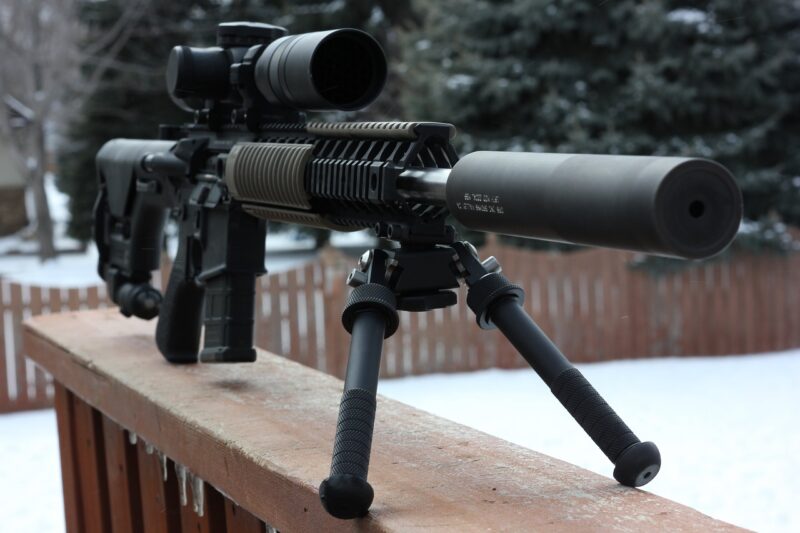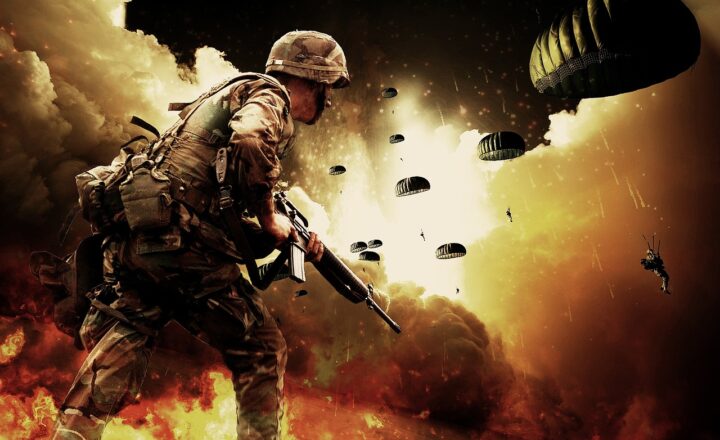The History of Sniper Warfare: From Basic Rifles to High-Tech Precision
November 16, 2024

Sniper warfare has both intrigued and horrified humanity throughout military history. The evolution of the sniper from early marksmen to today’s highly trained specialists reflects broader changes in warfare, technology, and tactics.
1. Early Innovations: Roots of Sniper Warfare
Sniper warfare has its roots in the early use of rifled firearms during the 17th century, which dramatically increased a marksman’s range and accuracy. The introduction of the rifle allowed skilled shooters to engage targets at greater distances, marking the beginning of long-range shooting in combat.
One of the earliest documented uses of what could be considered a sniper occurred during the American Revolutionary War. Jäger soldiers from Germany employed rifled firearms effectively against British forces, demonstrating the tactical advantages of accurate long-range fire. The combination of specialized training, better weaponry, and terrain knowledge enabled these marksmen to ambush enemy troops effectively – a precursor to modern sniper tactics.
2. The Civil War and the Birth of the Modern Sniper
The American Civil War (1861-1865) marked a significant turning point for sniper warfare. This conflict saw the first organized units of sharpshooters, such as the 1st United States Sharpshooters led by Colonel Hiram Berdan. Equipped with the Springfield Model 1861 rifle, these soldiers were trained to excel in marksmanship and camouflage, positioning them as elite forces on the battlefield.
Sharpshooters demonstrated the combat effectiveness of snipers, achieving extraordinary feats. On some occasions, skilled snipers could shoot at targets a distance of 800 yards (about 730 meters) or more. This newfound emphasis on precision shooting led to the development of more advanced rifle designs, including the breech-loading rifle and repeating firearms, ultimately enhancing firepower and accuracy.
3. World War I: The Rise of the Sniper Elite
The First World War brought significant advancements in military technology, and with it, the concept of the sniper evolved into something far more tactical. As trench warfare dictated the battlefield, the presence of snipers became essential. Both the Allied forces and the Central Powers developed sniper units that combined traditional marksmanship with military strategy.
Germany’s S.S. units, for instance, used the Gewehr 98 rifle with telescopic sights. This remarkable innovation allowed snipers to engage enemies at distances previously unimaginable. The role of the sniper in the Great War showcased their ability to hinder enemy movements and inflict psychological terror.
Notably, one of the most distinguished snipers of this era was Francis Pegahmagabow, a Canadian First Nations soldier who recorded over 378 confirmed kills. His achievements established the sniper’s role in asymmetrical warfare, where precision and stealth could counterbalance larger force advantages.
4. World War II: Technology and Training Advancement
World War II saw sniper warfare reach new heights through technological advancements and rigorous training. The Soviet Union and Germany developed elite sniper programs that trained soldiers not only in marksmanship but also in camouflage, stealth, and situational awareness.
Soviet snipers became particularly renowned for their skills. The legendary Vasily Zaytsev, who fought during the Battle of Stalingrad, recorded more than 200 confirmed kills, demonstrating the lethal effectiveness of well-trained soldiers in urban warfare. He was part of a sniper team, illustrating the importance of collaboration in sniper operations.
Rifles like the Mosin-Nagant with a PU scope became iconic, showcasing the importance of accurate optics in sniper strategy. Furthermore, World War II saw the advent of the first specialized sniper rifles, designed specifically for long-range precision engagements.
5. Post-War Era: The Evolution of Sniper Doctrine
In the years following World War II, the dynamics of warfare continued to evolve. Small-scale conflicts, guerilla warfare, and counterinsurgency operations highlighted the continuing relevance of snipers. Military doctrines adapted, emphasizing the sniper’s role in reconnaissance, target acquisition, and psychological operations.
The Vietnam War showcased the complexity of sniper warfare in the jungle and urban environments, where the ability to blend with surroundings became critical. American forces employed specialized units like the U.S. Army’s Special Forces and Navy Seals to execute sniper operations with deadly efficiency.
6. Modern Warfare: High-Tech Precision and Scope
Today, sniper warfare has transformed dramatically due to technological advancements such as digital rangefinders, ballistic calculators, and advanced optics. The modern sniper is equipped with a variety of rifles, including the .338 Lapua Magnum and the M2010 Enhanced Sniper Rifle, renowned for their remarkable accuracy at great distances.
Precision shooting in contemporary warfare extends beyond the battlefield with the use of unmanned aerial vehicles (UAVs) and drones for reconnaissance, target identification, and long-range strikes. The capability to assess enemy positions with real-time information has revolutionized how modern snipers operate.
Additionally, the integration of new technologies such as smart scopes, which offer ballistic data and environmental adjustments, contribute to improved accuracy and efficiency. Training programs now emphasize not just marksmanship, but also data analysis, situational awareness, and psychological conditioning, reflecting the complexity of the role in modern military strategy.
Conclusion: The Legacy of Sniper Warfare
The history of sniper warfare is a testament to human ingenuity and the relentless pursuit of precision and effectiveness in combat. From the early sharpshooters of the Revolutionary War to the high-tech specialists of today, the evolution of the sniper reflects broader changes in military strategy and technology.
As warfare continues to evolve, so too will the role and capabilities of snipers, maintaining their status as a key component of modern military operations. For generations to come, the sniper will remain an enigmatic figure, adept at blending skill and technology into a singular lethal force on the battlefield.








